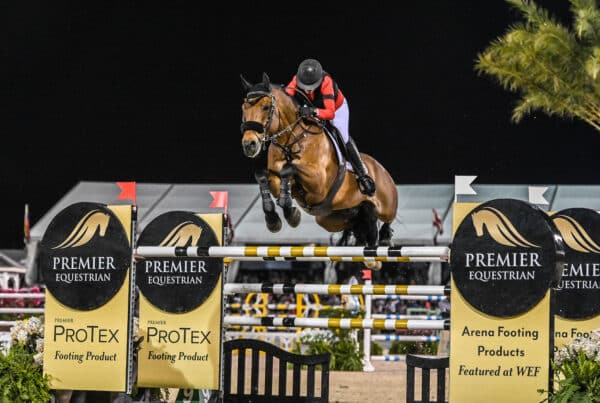By Heidi Zorn, Premier Equestrian
Sand is the most important ingredient for an equestrian surface. Sand qualities will greatly affect the performance of your surface, such as being tight, loose, or just right; soft or hard; and how much dust is produced. There are over 10,000 different sand names and types just in North America alone. Getting the correct sand is key, and just going with a name won’t get you there.
We’ve listed 3 key qualities to help you understand how different sands could affect your surface. By understanding these characteristics you will be able to determine the proper sand and particle size for adding additives, improving an existing surface or building a new arena.

Sand is classified by its size, rather than what type of mineral it is. Sand sizes range from 4.76 to 0.074 mm. It is smaller than gravel and larger than silt/clay.
#1 Most Important Quality: Sand Gradation
This is the representation of different sized particles. When particles are all the same size (a), the sand remains loose, may become shifty, or feel deep. Sand with little variation in differing sizes (b) will separate and become packed on the bottom and loose on top. A happy medium range of large to small particles (c) will help keep your footing firm, but not compacted.
#2 Most Important Quality: Mineral

The type of mineral affects how the sand particles will hold up over time. When sand particles become small enough they turn into dust and become airborne. Quartz and Silica are commonly used for horse arenas because the hardness of the particle. Different regions of the country will affect what minerals are available.

#3 Most Important Quality: Sand Shape
This affects how the grains nest together, which affects stability underfoot. Round particles create voids and offer cushioning. However, they are typically unstable and can roll like ball bearings, decreasing stability and traction. Angular particles have sharp edges and fit together tightly. This provides stability and traction, but angular particles can compact and become hard. Sub-angular particles have the sharp edges worn off. They will nest while still allowing some movement. This lessens compaction and provides traction.
Sand is the key ingredient in all good arena footing; however, not every kind of sand is suitable for all riding arenas. Choosing the wrong sand can create problems and be very expensive over time. A Premier Footing specialist can help troubleshoot the pitfalls of getting the wrong sand type.











One Comment